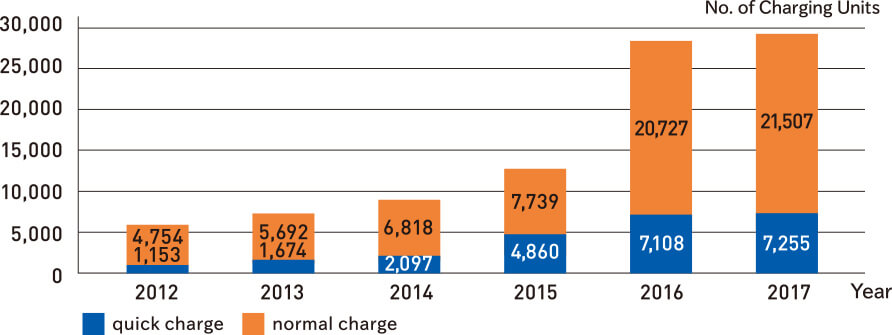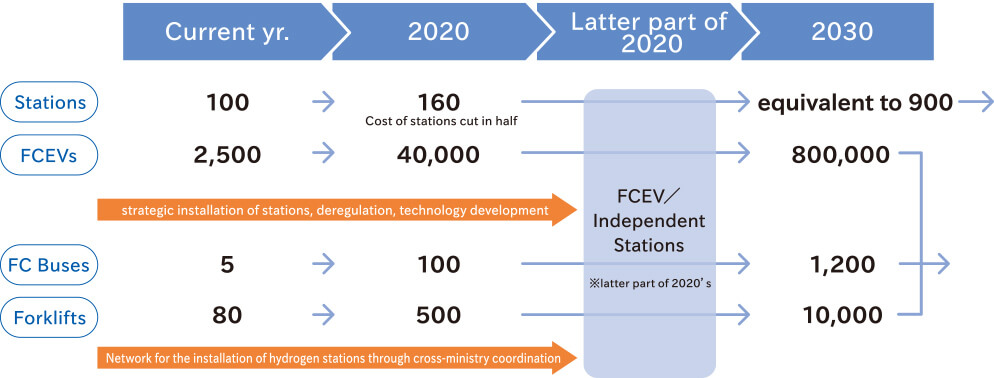Trends in Infrastructure
1, Charging Infrastructure
The installation of charging stations all over the country is essential for the promotion of BEVs. Currently, there are two ways to charge the major commercial BEVs sold in Japan, normal charging (Alternate Current) and quick charging(Direct Current).
Normal charging stations can be placed in homes; the approximate charging time is 8 hours.※ The cost of installation is much less compared to fast charging stations, making it more suitable for places that allow vehicles to park for a prolonged period of time e.g. homes, hotels, offices.
Electricity at a higher voltage is used for quick charging stations. 30 minutes of charging generally will result in 80% charge, making it suitable for on-the-go charging and emergencies.
The charging stations are rapidly growing in number, as the government subsidizes them.
Driving range per charge has greatly improved and at the same time, BEVs are requiring less time to charge, this creating the stage for BEVs to be driven all over Japan.
Installation of Charging Units

2, Hydrogen Infrastructure
Installations of hydrogen charging stations for commercial use are currently underway in the four major cities in Japan.
Since 2014, the government subsidy program, The Creation of New Demand for Fuel Cell Vehicles, by METI has been in place since 2014, which has promoted the installation of hydrogen charging stations for commercial use. There are 100 stations in operation as of August 2018.
The installation of hydrogen stations is a must in the promotion of FCEV. In the Basic Strategy of Hydrogen, a government paper, the target number of stations is as follows: 160 stations by fiscal year 2020, 320 by fiscal year 2025. In addition, the target numbers for FCEVs are: approximately 40,000 vehicles by 2020, and approximately, 200,000 vehicles by 2025, reaching approximately 800,000 vehicles by 2030.
100 Stations in major cities and surrounding areas
| Number of Hydrogen Stations installed |
|---|
| Kanto region: 40 stations |
| Chukyo region: 25 stations |
| Kansai region: 12 stations |
| Northern Kyushu region: 11 stations |
| Other regions: 12 stations |
Areas where stations will be installed
as a part of the government subsidy program
for the Creation of New Demand for Fuel Cell Vehicles
Adoption scenario for FCEV and other vehicles etc.


